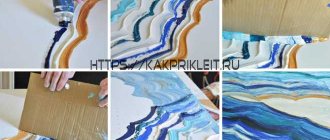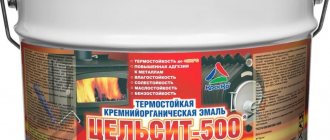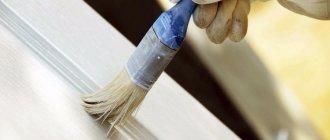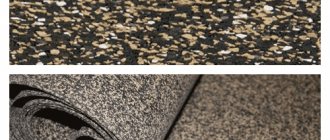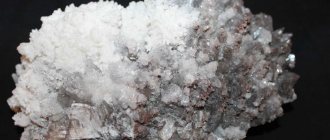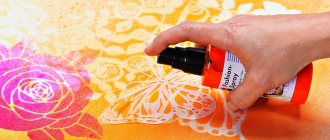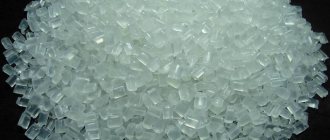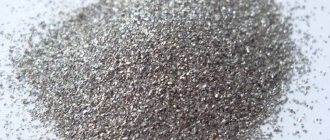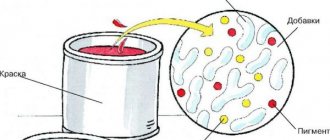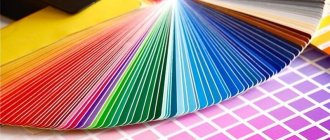Compound
Acrylic paint consists of the following components:
- Acrylic resins that form a protective film when cured.
- Coloring pigments of organic and inorganic origin.
- Plain water used as a solvent.
- Natural and synthetic fillers. They give the coating strength.
- Polyacrylates and polymethacrylates.
Acrylic paints have a simple composition and at the same time high-quality technical characteristics. They are common in construction and industry.
The water-dispersion base is the basic advantage of acrylic paints. Due to their composition they are suitable for almost all surfaces.
The binder component in paints is an aqueous suspension of synthetic resins. The base is polymers: ethyl, methyl butyl acrylic.
Popular manufacturers
Acrylic paints are available in tubes or cans, which are collected in sets or sold individually.
The Nevskaya Palitra company produces products for painting, decorative and design work.
Products are presented in series:
- "Sonnet". For students of art schools. Organic pigments are used in production.
- “Ladoga”. Professional series. Some expensive pigments have been replaced with organic ones. The palette consists of 51 colors.
- "Master Class". For master artists. The composition includes inorganic pigments of our own production. After drying, the paint retains its shine and saturation. Makes the work durable.
- “Flower.” Children's series. Meets safety standards. Mixes well and dries quickly.
- DECOLA. The paints are intended for painting.
The Luch company is a manufacturer of goods for children's creativity.
Products from the “Acrylic” series are a universal material for painting, represented by sets of paints:
- artistic;
- fluorescent;
- metallic;
- mother-of-pearl;
- on fabric.
The Tair company produces creative products for both professionals and amateurs. The range is designed for painting, arts and crafts and coloring. Allows you to write in various techniques. It has a rich range, pure colors.
Series:
- “Acrylic Art”;
- “Decolor”;
- “Acrylic Hobby”;
- for painting;
- “Acrylic Hobby De Luxe”;
- on fabric;
- “Decolor” is decorative;
- interference "Chameleon".
The Olki company produces inexpensive and high-quality acrylic paints.
The Olki company produces materials for children's artistic creativity. Wide color palette of 72 colors, compatible with each other.
Olki produces acrylic:
- for design work;
- art;
- for working on fabric;
- for ceramics;
- for glass.
The Gamma company produces goods for creativity and hobbies.
The products are intended for children and adults, beginning artists and professionals and are presented in the following series:
- “Moscow palette”;
- "Studio";
- “Lyceum”;
- "Deco".
Soft acrylic paint with glitter from Decola.
VDAK-1180
Water-dispersed acrylic paint meeting GOST 1180 is used as a starting and secondary coating. Designed mainly for external facades. Suitable for finishing large industrial facilities. The paint is offered in various colors. It is resistant to moisture, low and high temperatures. But the compositions are quite thick, so they are not suitable for interior work.
Characteristics of VDAK-1180 paint:
- The color of the coating can be any. It turns out smooth and matte.
- The paint is moisture resistant and remains breathable.
- It takes an hour to dry the surface.
- The dye has a mild aroma.
- The average composition consumption is 65 grams per square meter. The permissible solvent level is up to 5%.
This type of coating is packaged in one and a half kilogram containers. If you add a lot of water during the dilution process, the dye will have a grayish tone. You can apply paint to the surface with a regular brush or roller.
Acrylic painting techniques
There are several techniques for painting with acrylic paints.
Acrylic painting techniques
- Glazing - translucent diluted paint is applied in a thin layer to the canvas by pouring.
- Dry technique - paint is applied to the surface with a dry brush. After washing, wipe the brushes thoroughly.
- The wet technique is used if you need to create a watercolor effect; the paints are generously diluted with water.
- Impasto involves applying thick paint to the canvas in thick, raised strokes.
Acrylic paints also allow you to work in mixed media, using different techniques.
Video: Selection of techniques using acrylic paints (English)
Dry Brush - dry brush technique, wet-in-wet - using a large amount of water for a watercolor effect, Impasto - paint strokes using a palette knife / spatula, etc.
VDAK-2180
This finishing material is suitable for interior decoration. It is used for painting ceilings and walls with moderate humidity levels. They can be used to paint wallpaper. The dye gives a high-quality matte finish that is breathable. Its features stand out:
- Good adhesion to the surface.
- The paint can be used on any surface.
- No roughness or smudges occur during use.
- No unpleasant odor, pleasant white color.
- The material masks unevenness.
- Demonstrates resistance to air.
- The composition hardens in about an hour. It takes a day to dry completely.
- Consumption: about 160-180 grams per square meter.
- The material has hypoallergenic properties.
Choice of colors
Currently, experts consider acrylic water-based paint to be the best, for the production of which acrylic resins are used. It is characterized by increased strength and elasticity.
Compositions made on the basis of acrylic copolymers are more affordable:
- styrene acrylic;
- acrylic silicone;
- vinyl acrylic.
Acrylic paint is available for sale in a wide selection of products that differ in consistency and composition. Some paints are intended for dry rooms, while others are intended for those where humidity is significantly increased.
Manufacturers do not recommend using the compositions for purposes other than their intended purpose, for example, if it is moisture-resistant, it is used to paint the ceiling surface in the bathroom. Acrylic paint for ceilings is usually sold in white, and the use of special colors helps to achieve the required shade.
Depending on the required degree of saturation, the required number of such tubes is added to the coloring composition. The retail chain also has paints in ready-made colors and shades.
Depending on the level of whiteness, acrylic compositions are:
- white;
- super white;
- milky white.
Before you paint the ceiling with acrylic paint, you need to purchase the whitest possible product. The label affixed to the bucket may contain information regarding a color that differs from the actual whiteness.
Therefore, it is advisable in the store to ask the seller to slightly open the lid in order to compare the color of the composition with a piece of white copy paper. If their whiteness is similar, then the paint can be used to paint the ceiling surface.
After complete drying, the ceiling with an acrylic surface has a glossy or matte texture. When choosing a coloring composition, you need to remember that in addition to the whiteness of the ceiling, dullness is considered another indicator of its impeccable appearance. The more it turns out, the less noticeable the defects of the ceiling surface, which include unevenness and uneven coloring, will be.
If you want to create a colored ceiling, it is better to use glossy compounds. But they can be chosen when the ceiling base is perfectly flat and has a significant area. Glossy paint is also purchased when the room is non-residential.
The highest quality among domestic and imported products is paint from the following companies: Svyatozar, Tikkurila, Dulux, Himaton, Himos and others.
VDAK-111
The paint is suitable for finishing facades and interior surfaces. It demonstrates resistance to moisture and atmosphere, which extends its life up to five years. But the composition cannot be used for painting floors - intense loads lead to its rapid abrasion.
The surface does not require complex preparation before using paint. The product is environmentally friendly and has the following characteristics:
- At a temperature of about 20 degrees, the paint hardens within an hour.
- The consumption rate is 100-150 grams per square meter.
- The paint has a white tint that can be tinted.
- The material is resistant to moisture and ultraviolet radiation. When finished, it can easily withstand temperatures from minus 50 to plus 60 degrees.
- Before work, the structure must be primed. If the paint thickens, you can partially dilute it using thinner or plain water.
VDAK-114
Matte aqua enamel, which can be used for both interior and exterior decoration. The material is resistant to moisture, so it can be used for rooms where its level is high (kitchen, bathroom, swimming pool). It is used for painting walls and ceilings and has a large palette. The service life reaches 10 years. There are the following properties:
- This is fireproof paint and has no odor.
- When applied, a durable matte film is formed that is resistant to mechanical factors.
- The composition has good adhesion and adheres well to almost any material.
- It tolerates moisture, wet cleaning and prolonged exposure to sunlight.
- Dries in about an hour. During operation, the dye repels dirt well.
- The average consumption is 150-200 grams per square meter.
VDAK-101
The paint is used for painting building facades, as well as internal load-bearing structures made of fiberboard, chipboard, and plasterboard. It is non-toxic and helps protect the surface from mechanical damage and atmospheric influences. The aesthetic characteristics of the material are preserved for up to 8 years. Let us highlight the main properties of the coating:
- The material has good adhesion to any surfaces.
- Easily tolerates atmospheric and weather conditions, resistant to moisture.
- The final breathable layer prevents the formation of mildew.
- The surface can then be easily washed and cleaned.
- It takes an hour for the coating to dry completely at a temperature of about 20 degrees.
- A wide range of colors is available.
VDAK-449
This paint is used only for painting floors and some other concrete and wood surfaces. It has a pleasant color and no smell. The coating is fireproof, durable and wear-resistant. It is typically used for basements and utility rooms in residential areas where there is no high humidity. The paint characteristics are as follows:
- The final coating is uniform or semi-matte.
- The color may be red-brown or yellow-brown.
- When properly coated, it can last up to five years.
- Paint consumption is 200-250 grams per square meter.
- It takes about an hour for the coating to dry completely.
- The dye can be diluted with water up to 10%.
In the future, the coating can be easily washed with ordinary water, but this must take at least two weeks from the date of application. For processing you can use a brush or roller. It is not recommended to use paint at temperatures less than five degrees and humidity levels greater than 80%.
How to paint
There are a number of significant points that need to be taken into account when working with acrylic paints. They are as follows:
For painting, it is recommended to use a special construction brush, roller or spray gun. It is better to choose a roller made of natural bristles that will not harden over time. The coating is evenly applied to the prepared surface in 2-3 layers. Each layer should be given time to set and dry. It is necessary to take into account the time during which the paint dries when working, and use a small container for painting. During the work process, it is important to promptly remove smudges and unpainted areas. To prevent the dye from getting on the skin, wear gloves and overalls. If this happens, the material is removed with a wet sponge.
How to mix acrylic paints?
Methods for mixing acrylic paints
To get new shades, you can mix acrylic paints according to the same principle as oil paints. Take a small amount of two or more colors and mix until a uniform shade is obtained. Special tables help to correctly combine paint in the right proportions.
Another method of mixing: apply a second transparent layer on top of the already well-dried layer, using a different color. Thus, you can achieve a very interesting effect: the main color will seem to shine through the top layer. This method requires certain skills and knowledge of glazing techniques.
When it comes to the amount of shade mixed, it is always better to mix a little more than may be required. Then you will have the opportunity to quietly correct any defects after drying.
Video: Three easy ways to mix acrylic paints
Latex or acrylic
Both acrylic and latex paints are used for interior and exterior surfaces and have both pros and cons.
If we compare acrylic interior and latex for interior work, then latex is preferable. Since it is a more moisture-resistant paint.
If you compare washable acrylic and latex for walls in the kitchen and bathroom, then you can focus on price. The characteristics of these paints are almost the same.
If you compare acrylic facade and latex facade, then it is better to choose latex. Since it is more vapor permeable. Those. It does not let moisture in, but removes it from the inside of the wall. The walls inside are dry - mold and mildew will not grow.
How to properly thin acrylic paints?
If you use water to dilute acrylic, it should be clean and cool. The properties of the paint vary depending on the selected proportion.
- 1:1 is suitable for the first layers, the fluidity of the paint improves, and it lays well without accumulating on the brush;
- 1:2 is used for secondary coats, the paint is distributed evenly, creating a smooth finish;
- 1:5 is used for glazing, acrylic creates a durable translucent layer, as the pigment easily penetrates into the pores of the surface. By the way, special thinners do not give such an effect.
Thinners, drying retardants and mediums are added to the paint strictly according to the manufacturer's instructions.
A significant disadvantage of this method is that the paint is unlikely to be as uniform as before, since some lumps may not completely dissolve.
Alkyd or acrylic
Alkyd paint is most often used for painting metal and wood (window frames, doors, chipboard).
- glossy surface
- vapor-tight
- diluted with solvent
- has a pungent odor
- more preferable for metal surface
Acrylic paint is used for walls, ceilings and facades.
- semi-matte surface
- vapor permeable (breathable)
- diluted with water (fireproof)
- does not have a pungent odor
- on metal surfaces can only be applied over enamel
Consumption
The consumption of acrylic paint per square meter is influenced by a number of indicators. This value in practice is determined by the following:
- Conditions in which it is planned to use paint for surface treatment.
- The structure and material of the structure itself, as well as the type of acrylic composition.
- A tool for applying paint to a prepared surface.
- How well the coating is prepared, the presence of cracks and irregularities on it.
The number of layers of dye that are applied to the surface to be finished. All of these points directly affect the consumption of acrylic dye per square meter. Their consumption rate is in the range of 100-350 grams per square meter.
The choice of paints and varnishes today is quite large. Acrylic paints are one of the most popular options. They successfully combine functional and aesthetic characteristics. The dyes are universal and durable, and there is nothing complicated in caring for them.
Varieties
Acrylic paints are universal, they are used for different surfaces, both for interior and exterior work. Among the existing varieties in the field of construction and repair, the following are popular:
- façade;
- interior;
- decorative
Facade
Facade acrylic paint for exterior use is used on concrete, wood and even metal. It evenly covers any surface and provides it with an attractive appearance for a long time. Paints for exterior use have improved light and water resistant properties and are characterized by a higher degree of adhesion. They also easily tolerate the negative effects of atmospheric phenomena, for example, strong wind, snow, rain.
To improve the coating on facades, experts recommend applying fixatives after painting. They are transparent and do not affect the color, but at the same time significantly extend the service life of the treated coating.
Difference in paint quality depending on price. Clearly
Interior
For interior work, it is recommended to use water-based acrylic paint. This variety is ideal for creating a bright interior. Water-based acrylic paint is used to decorate ceilings, floors, and walls with or without wallpaper. It is also used for painting decorative interior elements, for example, columns, baguettes, plastic or foam baseboards.
White water-based matte paint is usually used for the ceiling. It lays on the surface in a dense layer and even helps to hide minor irregularities. It is applied both to plaster and plasterboard sheets.
Acrylic paint for wallpaper is convenient because it evenly colors the surface and does not spoil the coating or make it wet. It is important to choose special wallpaper for painting, as it is denser than the usual paper or non-woven wallpaper.
Waterproof and washable acrylic paints are great for kitchens and bathrooms where there is a risk of contamination from cooking and splashes from bathing. It is also used in other rooms with high humidity.
Decorative
Acrylic paint for interior work can be decorative. In this case, it is used to decorate wall paintings and paint furniture. Manufacturers produce unusual decorative acrylic paints, for example, with mother-of-pearl or glitter, but the most popular of them is glossy.
